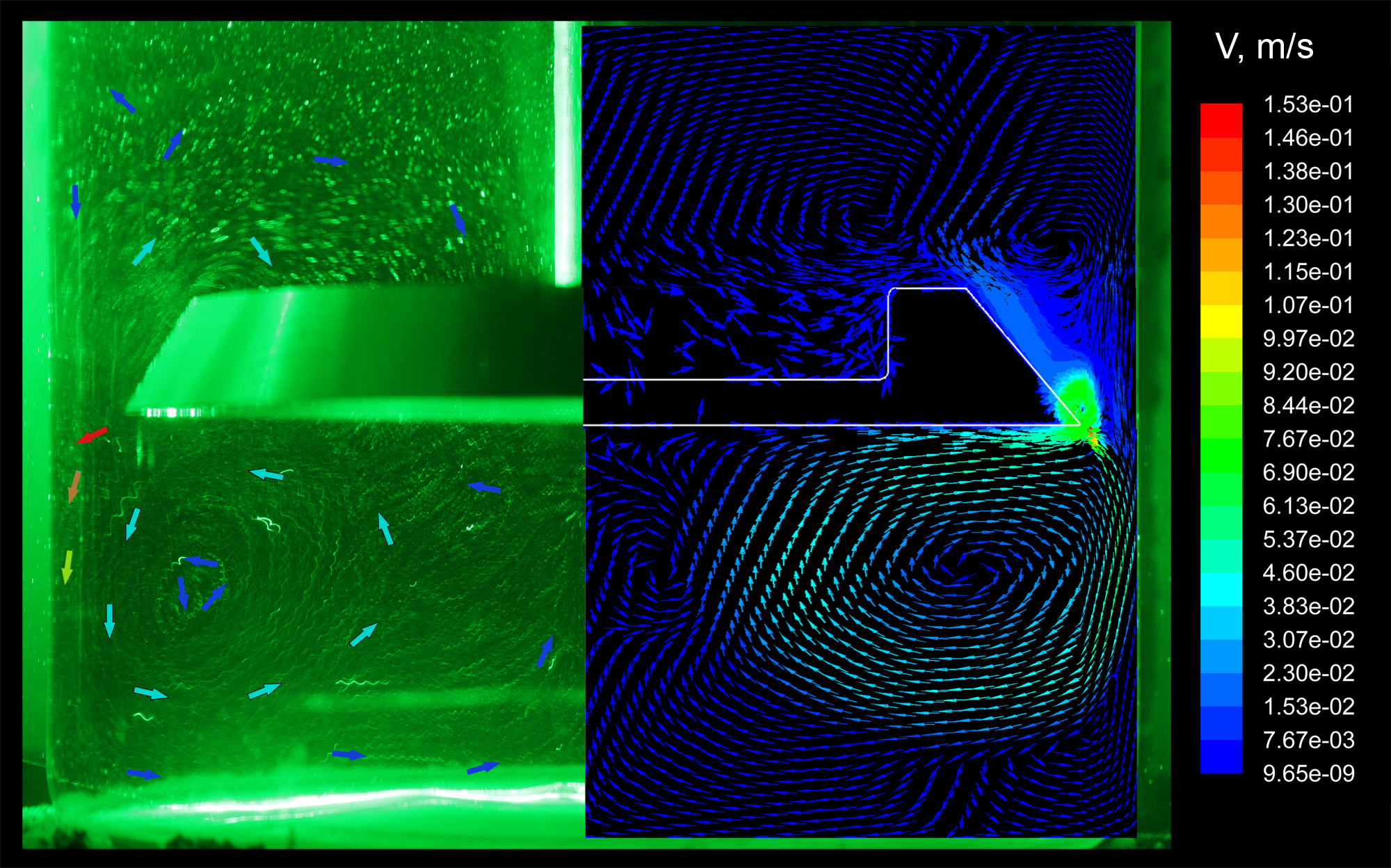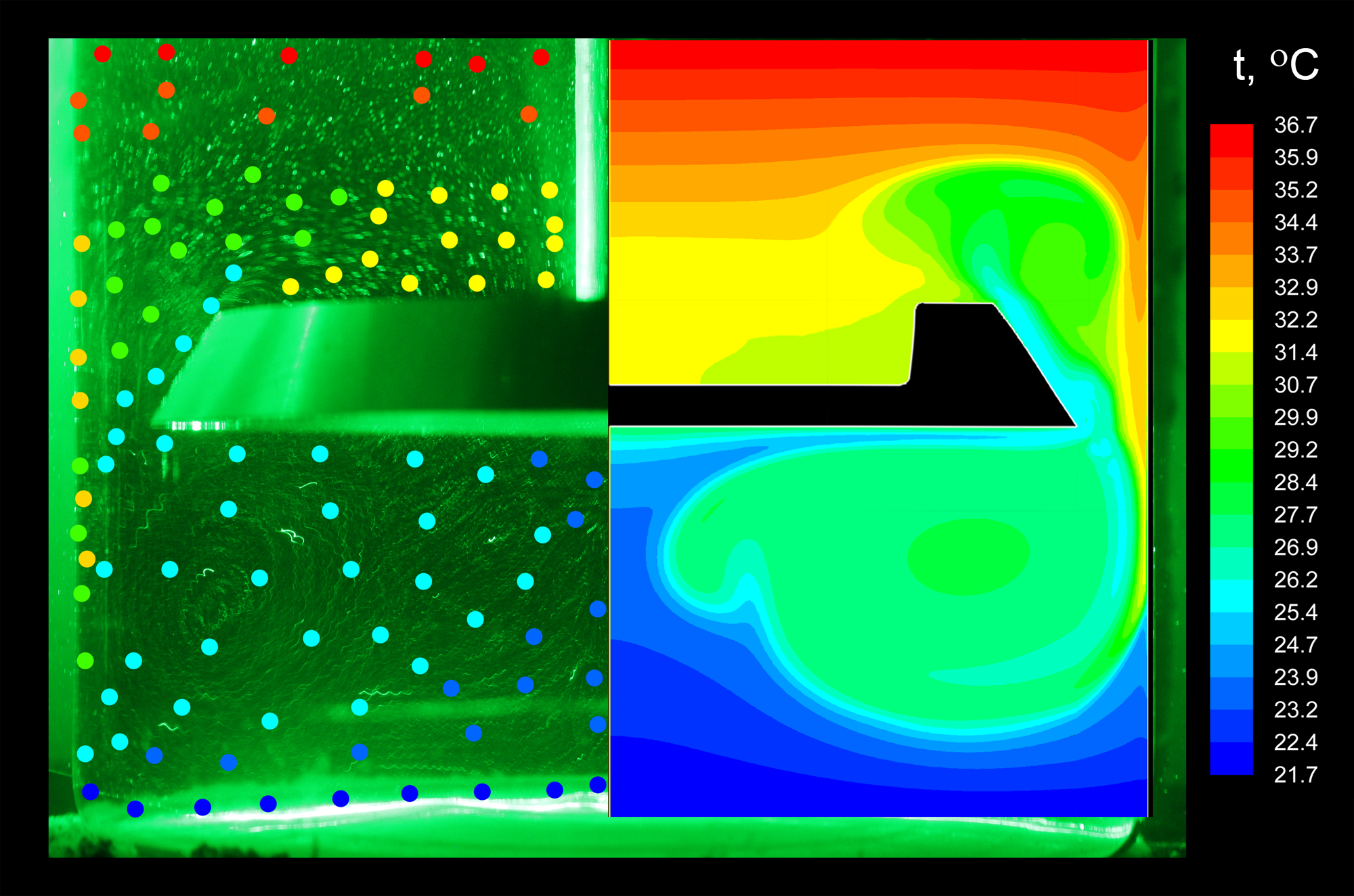| Search for content and authors |
Optimization of vibrating baffle configuration at AVC-CZ crystal growth |
| Igor C. Avetissov 1, Andrey P. Sadovskiy 2, Stanislav Belov 1, Chan Kong Khan 1, Ekaterina Sukhanova 1, Evgeny V. Zharikov 1 |
|
1. D.I.Mendeleyev University of Chemical Technology of Russia (MUCTR), Miusskaya sq. 9, Moscow 125047, Russian Federation |
| Abstract |
Axial vibrational control (AVC) is a powerful method to govern the heat and mass transfer and growth kinetics during crystallization from liquid phase [1]. It is realized by low-frequency oscillation of inert baffle submerged into melt. The investigations of AVC efficacy technique were carried out using NaNO3 as a model transparent low melting substance. The AVC-Bridgman and AVC-CZ grown crystals had low dislocation density [2] and high structure perfection [3]. In all experiments the oscillating baffle was made in form of a cylindrical disk with sharp edges. The optimal relation between disk thickness and edge rounding was found out [3]. For many practically important materials (e.g. laser materials) the CZ growth process is conducted in Pt or Ir crucible. In case of AVC technique application to these processes the oscillating disk could be not easy and expensive. We studied the problem of optimization of oscillating baffle configuration in AVC process with the emphasis on
In the research we combined numerical and physical modeling for disk optimization. The details of numerical modeling using FULENT software is described in [3] The setup for physical modeling of AVC process in shown on Fig. 1. To analyze the heat-mass transfer process at AVC action we used water–glycerol solutions with different viscosity (1–400 cPz). Cylindrical container made from quartz glass was used as a model crucible. To avoid cylindical distorsions the square rounded external vessel from glass was used. The vessel volume was filled with distilled water. A temperature gradient along the model crucible was organized by heating the upper part of the quartz glass by means of hot water, which was circulated on silicon hose. Structure and velocity of convective flows were recorded by digital camcoder Panasonic NV-GS 400 and digital camera Canon EOS350D. The “light knife” was produced by diode laser S-11 (λ= 532 nm) with a plane 3 mm thickness beam. To visualize melt flows a fixed amount of polymer particles Pliolite VTLTM (1.01 g/cm3 density, 10-100 micron diameter) was put into the melt. 
Fig. 2. Experimental (left) and calculated (right) mean velocity magnitude (m/s) of flows in water-glycerol solution at the disk oscillating with 0.3 mm amplitude and 20 Hz frequency 
Fig. 3. Experimental (left) and calculated (right) map of static temperature (°C) in water-glycerol solution at the disk oscillating with 0.3 mm amplitude and 20 Hz frequency.
Comparison of numerical simulation with physical modeling results (Fig.2,3) showed that we produced an adequate model of the AVC process. Modeling of different disk configurations with varying of generatrix slashing, baffle thickness, chasing dimension allowed to produce an optimal baffle configuration, which met the requirements. Taking into account the symmetry of CZ configuration we produced the baffle shown on Fig.4. 
Fig.4. Aluminum vibrating baffle for AVC-CZ NaNO3 crystal growth with decreased mass and vertical support rods for NaNO3 crystal growth.
We succeeded to reduce the baffle mass in 3 times keeping the vibrational flow intensity the same as for the initial cylindrical disk [3].Using the optimized baffle for AVC-CZ growth of NaNO3 crystal from 100 mm diameter crucible showed the high crystal perfection according to rocking curves measurements. Analyzing dislocation density, we failed to detect any etch pits in AVC-CZ grown crystals. 1. E.V. Zharikov Advanced Technologies of Crystal Growth from Melt Using Vibrational Influence. In: “Crystal Growth Technology. Semiconductors and Dielectrics”. Ed. by P. Capper and P. Rudolph. WILEY-VCH Verlag, Weinheim, 2010, 41-64 2. 2.I.Ch. Avetissov, A.P. Sadovskii, E.A. Sukhanova, E.V. Zharikov, A.I. Belogorokhov, B.N. Levonovich Czochralski crystal growth assisted by axial vibrational control technique. Journal of Crystal Growth 312 (2010) 1104–1108 3. I.Ch. Avetissov, A.P. Sadovskiy, E.A. Sukhanova, G.Yu. Orlova, I.A. Belogorokhov, E.V. Zharikov Perfection of NaNO3 single crystals grown by axial vibrational control technique in Czochralski configuration. Journal of Crystal Growth 360 (2012) 167–171 |
| Legal notice |
|
| Related papers |
Presentation: Poster at 17th International Conference on Crystal Growth and Epitaxy - ICCGE-17, Topical Session 8, by Igor C. AvetissovSee On-line Journal of 17th International Conference on Crystal Growth and Epitaxy - ICCGE-17 Submitted: 2013-03-28 11:32 Revised: 2013-07-25 12:43 |